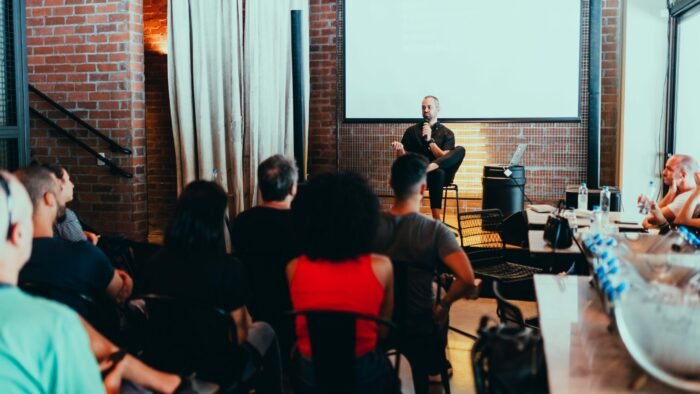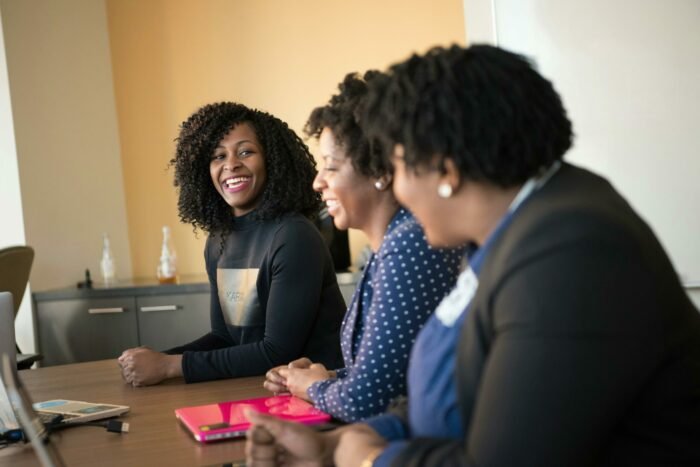The way we learn is evolving. Previously, kids were trained to learn by remembering facts, rote-learning information, and being taught how to think. Today, however, there is a shift in the way students learn. They are learning through observation and participation in activities meant to improve their skills and knowledge. In this blog, we will contrast passive and active learning and explain why you need both in your life.
Passive Learning vs Active Learning
What is Passive Learning?
Passive learning is the process of acquiring knowledge from observation and reading without actively thinking about it. It is commonly referred to as “learning by osmosis” because it is based on the body passively receiving knowledge through its senses.
It is a method of learning that has been utilized for centuries and is one of the most successful. The brain can only absorb so much information at one time, and passive learning takes advantage of this. You can absorb more information by slowing down the rate of your brain’s learning cycle.
Passive learning is not restricted to a single subject or skill; it can be applied to any subject or talent. Why is Passive Learning Beneficial? Although passive learning has been employed for many years, it is still widely misunderstood. People frequently believe it is inefficient or a waste of time.
True, passive learning takes longer than active learning, but there are numerous reasons why passive learning is so beneficial. Passive learning aids in more effective learning: By slowing down the rate of your brain’s learning cycle, passive learning allows you to acquire more information.
What is Active Learning?
Active Learning is a more recent technique of learning in which the brain is used to analyze information. The student must actively participate, and the brain’s natural response is to work harder to solve issues. The best approach to learning is to actively participate in the learning process. This can be accomplished by asking questions, putting oneself to the test, and challenging your thinking.
This learning strategy is based on the brain’s ability to recall and retain knowledge. It use the “mind’s eye” to aid remembering and is a good method for pupils who struggle with memory. You may train your brain to better organize and store knowledge by asking questions and undertaking problem-solving exercises.
In an active learning classroom, the teacher asks questions, allows students to take notes, and provides feedback. The teacher will also be working with students to test their understanding and problem-solve issues.
The Difference Between Passive and Active Learning
1. Passive learning involves reading and listening to information. You do it because you want to learn and it interests you.
2. Active learning is defined as actively engaging with the content you read and listen to. This entails asking questions and interacting with the material.
3. When you are first learning about something and need to understand it, you should adopt passive learning. You can then use active learning to go over it again.
4. When reading a magazine or newspaper, you should employ passive learning. If you’re reading a book and trying to apply what you’re reading to your life, you can use active learning.
5. Passive learning is listening to a lecture, reading a book, or watching a video and taking notes. This will be required for the majority of your education and training.
6. Active learning is when you actively participate in the process of learning. This will be required for the majority of your education and training.
7. While passive learning can be useful, it is not the ideal way to learn. It’s a good approach to obtaining a general understanding of the subject, but it’s not the ideal way to study the specifics.
8. Active learning is the best method to learn, but it takes time.
9. Passive learning occurs when you simply listen to someone speak. You don’t ask questions; instead, you sit back and listen to what they have to say. It’s fantastic for school or college, but it’s not so great for business.
10. Active learning occurs when you ask questions and actively participate in a discussion. You’re not just sitting there listening to what the other person says. You are also asking them questions and participating in the dialogue.
Statistics related to Active Learning Vs Passive Learning
Here are some statistics on the effectiveness of passive learning versus active learning:
- A meta-analysis of 225 studies found that students who participated in active learning performed significantly better on exams and other measures of performance than those who received traditional instruction, which is often characterized as passive learning. The effect size for the difference in performance between active learning and traditional instruction was 0.47, which is considered a moderate to large effect.
- A review of research on the use of lectures in higher education found that lectures were less effective at improving student learning and retention of knowledge compared to other teaching methods, such as small-group discussions and problem-based learning.
- A study of undergraduate biology students found that those who received traditional instruction (characterized as passive learning) had significantly lower exam scores and grade point averages than those who participated in active learning. The effect size for the difference in performance between the two groups was 0.68, which is considered a large effect.
- A review of research on the effectiveness of problem-based learning (a type of active learning) found that students who received traditional instruction (characterized as passive learning) had significantly lower exam scores and grade point averages than those who participated in problem-based learning. The effect size for the difference in performance between the two groups was 0.52, which is considered a moderate to large effect.
Overall, these studies suggest that passive learning may be less effective than more active forms of instruction in improving student performance and retention of knowledge. However, it’s important to note that different teaching methods may be more effective in different contexts, and that it may be necessary to use a variety of teaching approaches to meet the needs of all students.
The Importance of Active Learning
1. Active learning is more effective than passive learning.
Students who participate in active learning outperform those who simply listen to the teacher. Students who practiced a new skill or activity comprehend it more thoroughly than those who only read about it. When children with dyslexia are fully engaged, they learn best.
2. Active learning helps to learn faster.
Students that participate in active learning learn more quickly. Students who participate in active learning are more likely to succeed academically. Active learning allows pupils to study more effectively because they are more involved and motivated.
3. Active learning helps to retain the information they learn.
It is a process that encourages students to seek out and use the information and resources they require in order to become self-directed learners. People who engage in active learning are more likely to remember what they learn.
4. Active learning helps to develop critical thinking skills.
Active learning fosters the development of critical thinking skills. Analyzing, synthesizing, and evaluating information teaches students how to think. People who participate in active learning tend to improve their critical thinking abilities.
5. Active learning helps to be more confident.
When a student is given an issue to solve on their own, this is referred to as active learning. This provides kids with more responsibility and empowers them to take charge of their own education.
People feel more confident when they participate in active learning. Because they are more involved, they are able to ask questions and learn more. People who participate in active learning are more self-assured.
6. Active learning helps to become more independent.
Active learning is a teaching approach in which pupils are given assignments to complete on their own. They can then finish their work and present it to the teacher. This promotes kids to become more self-sufficient and capable of learning on their own. People that participate in active learning tend to become more self-sufficient.
7. Active learning helps to be more motivated.
Getting learners involved in the learning process is the most effective approach to inspire them. Participation in the learning process leads to active learning. Being motivated is aided by active learning. Students are more likely to be engaged and motivated when they participate in activities that demand them to think. People who participate in active learning are more motivated.
8. Active learning helps people to be more engaged.
Active learning necessitates some effort on the part of the learner. Students who are actively interested in their studies are more likely to pay attention and remember information. People who participate in active learning are more engaged in the classroom.
9. Active learning helps to learn better.
Active learning is a style of learning in which the learner participates actively in the process. In an active learning context, for example, the teacher may pose questions to the pupils and then respond to them. This permits the pupils to learn from both the teacher and one another. Students that participate in active learning tend to learn more effectively.
10. Active learning helps to learn more effectively.
In fact, several studies indicate that kids who are active learners learn more successfully than passive learners. Students that participate in active learning learn more successfully.
The Importance of Passive Learning
-
Learn without being active.
Passive learning is significant since it requires no active effort to learn. You can sit down and read something or watch a video and still learn. This is an excellent approach to learning about a subject that interests you.
-
Variety of ways to learn.
There are numerous ways to learn passively. Some people enjoy podcasts, while others prefer to read books. Some people enjoy watching movies, while others enjoy listening to audiobooks.
-
A modern approach.
A more current approach is passive learning. It’s all about delegating tasks to others. You are not the one who is doing the labor. You’re the only one who is simply watching and listening.
-
Learn without any pressure.
Passive learning is an excellent method for acquiring new skills, and it is much simpler than you might believe. You don’t have to worry about putting in your own work or putting yourself under a lot of pressure.
-
It saves time.
You don’t have to worry about finding a tutor or completing assignments, and you don’t have to pay for classes. You can use passive learning to get an early start on your own active learning, saving you time in the long run.
Why Active Learning Works Better Than Passive Learning?
Passive learning occurs when you are instructed what to do but are unable to demonstrate it on your own. On tests, you are expected to memorize stuff and regurgitate it. Active learning is a type of learning in which you can practice problem-solving and critical thinking skills.
You will be asked to solve problems and analyze data. Both methods of education have advantages and cons. Passive learning delivers a large amount of easily assimilated information. However, it is not really engaging. You might not be able to work on a topic or examine an idea for a long time.
In contrast, active learning is more interactive. It allows you to solve difficulties and study ideas at the same time. This enables you to grasp information in a new way. To summarize, active learning is superior to passive learning for the following reasons:
1. Active learning has been shown to be more effective than passive learning. A study conducted by the University of Illinois discovered that students who engaged in active learning outperformed those who engaged in passive learning on examinations.
2. It encourages pupils to take responsibility for their own learning. Passive learning requires students to rely entirely on the teacher. Students have little say in what they learn or how they learn it. Active learning requires students to take ownership of their own learning.
3. Active learning fosters more motivation and engagement. Passive learning is a passive method of learning. It requires little or no effort from the pupil. Students who learn passively are less likely to be motivated to learn. They dislike the learning process and may not put forth much effort as a result. Active learning, on the other hand, requires students to work hard to learn. They have to put in a lot of time and effort to learn.
4. In addition, active learning is more successful than standard lectures. According to University of Michigan research, students who attended a lecture and then took a quiz did much worse on the test than those who attended the lecture and then went through the subject on their own.
5. Active learning promotes a deeper level of comprehension. Students learn passively by listening to the teacher. This sort of learning is shallow, preventing pupils from making connections with the subject. Active learning, on the other hand, necessitates student participation in the learning process. It compels students to learn the topic on their own.
6. On the other hand, active learning is thrilling. You’re doing something and making decisions on how to respond to the information. It’s more entertaining than sitting through a lecture.
7. Active learning boosts pupils’ inventiveness and engages their minds. When students learn something for themselves, they are more likely to remember it.
8. Active learning is an excellent method of teaching because it allows students to create connections between the content you are teaching and their real-world experiences. This will improve their understanding of subjects and give them more confidence in their talents.
![Passive Learning vs Active Learning [20 Best Usage] 1 Passive Learning vs Active Learning](https://zoets.b-cdn.net/wp-content/uploads/2022/12/Passive-Learning-vs-Active-Learning-e1672398428178.png)
![Passive Learning vs Active Learning [20 Best Usage] 2 Passive and Active Learning](https://zoets.b-cdn.net/wp-content/uploads/2022/12/Passive-and-Active-Learning-scaled-e1672844306104-1024x683.jpg)
![Passive Learning vs Active Learning [20 Best Usage] 3 Importance of Active Learning](https://zoets.b-cdn.net/wp-content/uploads/2022/12/Importance-of-Active-Learning-scaled-e1672844509710-1024x684.jpg)
![Passive Learning vs Active Learning [20 Best Usage] 4 Why Active Learning Works Better Than Passive Learning](https://zoets.b-cdn.net/wp-content/uploads/2022/12/Why-Active-Learning-Works-Better-Than-Passive-Learning-scaled-e1672844648953-1024x683.jpg)




![Mastering Personality Style Adaptability Tactics [5 Benefits] 9 Mastering Personality Style Adaptability Tactics](https://zoets.b-cdn.net/wp-content/uploads/2024/02/2ojpb-e1709053841881.jpg)
![How to Improve Interpersonal Skills? [6 Steps] 10 How to Improve Interpersonal Skills](https://zoets.b-cdn.net/wp-content/uploads/2024/02/pexels-fauxels-3184357-scaled-e1708708387711.jpg)


![Stress Management Techniques for Administrative Professionals [Best 7] 13 Stress Management Techniques for Administrative Professionals](https://zoets.b-cdn.net/wp-content/uploads/2024/02/pexels-mikhail-nilov-8297240-scaled-e1708541459861.jpg)